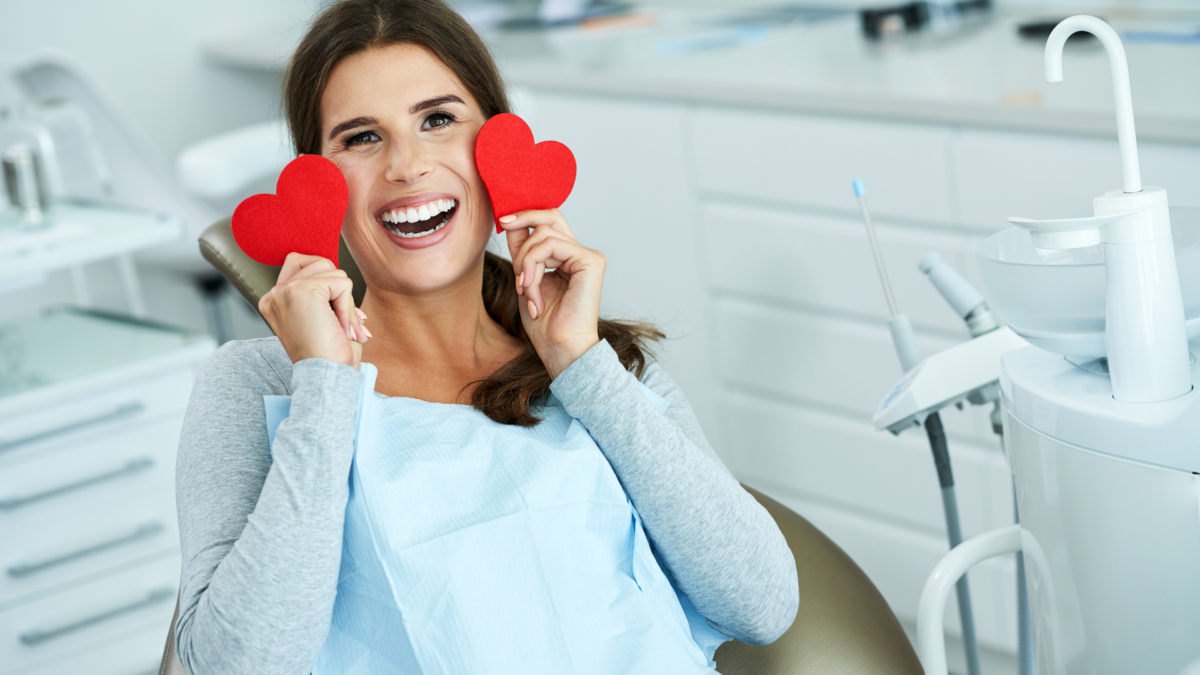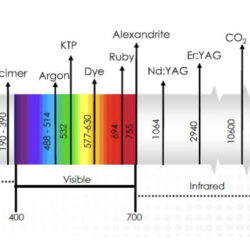Hey there, Laser Hygienists!
As Valentine’s Day approaches, our hearts naturally turn to thoughts of love and appreciation. And speaking of hearts, did you know there’s a significant link between your patients’ dental health and their heart health?
Of course you do.
But do your patients know? How often are you having this conversation with your patients?
Typical RDH scenario in clinical practice:
You’re doing your routine periodontal evalulation on a patient, and you notice their gums are bleeding. Now, it’s easy to dismiss this: perio patients always bleed, right?
Insight: In our Laser Certification Course, we teach to set a new standard: Zero Bleeding Tolerance. We pay extra close attention to our cardiac patients, because active bleeding is a red flag waving about a more serious level and extent of periodontal disease, and potentially unstable heart disease.
We ask:
“When was your last primary care check up, Mr. Smith?”
“Are you keeping up with your heart medications? Do they dry your mouth?”
Checks blood pressure. Decides if it’s safe to treat today. What do the gums say? “Save ME! I’m drowning in inflammation and I can’t breathe!”
Seriously, I imagine that is what the gums are saying.
What does the research say?
In regards to the correlation between heart disease and gum disease:
Cardiovascular disease and periodontal disease are two distinct conditions that have been found to be linked through various research studies. Periodontal disease is a chronic inflammatory condition that affects the supporting structures of the teeth, including the gums, periodontal ligament, and jawbone. It is primarily caused by the accumulation of dental plaque, a sticky film of bacteria that forms on the teeth. If left untreated, periodontal disease can lead to gum inflammation, gum recession, tooth loss, and even systemic health problems. Several mechanisms have been proposed to explain the potential link between periodontal disease and cardiovascular disease. Maintaining good oral hygiene and preventing or treating periodontal disease is important for overall health 1
Why “the gums can’t breathe”
Research Reference: Oxygen radicals, inflammation, and tissue injury
Inflammatory reactions often result in the activation and recruitment of phagocytic cells (e.g., neutrophils and/ or tissue macrophages) whose products result in injury to the tissue. In killing of endothelial cells by activated neutrophils as well as in lung injury produced by either activated neutrophils or activated macrophages there is evidence that H2O2 and iron play a role. HO· may be a key oxygen product related to the process of injury. Endothelial cells in some vascular compartments may be susceptible to neutrophil mediated injury in a manner that is independent of oxygen radicals. On the basis of in vitro observations, a synergy exits between platelets and neutrophils, resulting in enhanced oxygen radical formation by the latter. Finally, the cytokines, interleukin 1 and tumor necrosis factor, released from macrophages have both direct stimulatory effects on oxygen radical formation in neutrophils and can “prime” macrophages for enhanced oxygen radical responses to other agonists. Cytokines may also alter endothelial cells rendering them more susceptible to oxygen radical mediated injury by neutrophils. This suggests a complex network of interactions between phagocytic cells and peptide mediators, the result of which is acute, oxygen radical mediated tissue injury. 2
Dental Hygiene Translation:
Q: Are free radicals good or bad?
A: Studies have connected oxidative stress as a result of a build up of free radicals to a number of diseases and signs of aging. “The instability that free radicals cause creates damage right down to the DNA level” 3
Relatable Verbiage:
Heart Disease is detrimental to the gingival tissues because it stimulates gum inflammation, wakes up the body’s immune system to fight a losing battle. So although the body’s immune system is designed to ward off inflammation and infection, with an immuno compromised system, it will be more difficult to self regulate, manage, maintain and stabilize.
Welp. Mr. Smith barely sees his pcp, his bp is not great but still within treatable range, and let’s just say he doesn’t exactly practice c cup flossing every day.
If ‘maintaining good oral hygiene’ is hard for the patient due to not only behavioral and compliance factors, but also due to the connection to his heart condition, what can we do as interventive action to ‘prevent or treat perio, [as necessary] for overall health’ ?
Diode Laser Therapy.
“Mr. Smith, is it okay if I talk to you more about the connection between why your gums bleed and your heart condition?”
(People, don’t judge the verbiage.. We are talking to Mr. Smith, not a dental colleague. Focus on the ask: it’s giving, “do I have permission to proceed with more education.. thus opening his mind and hopefully his heart … and his wallet?! Just kidding! No money grabs — just grabbing of his full attention .. patients never tell me no, so we proceed )
“When gums become inflamed due to periodontal disease, harmful bacteria can enter the bloodstream, triggering inflammation in other parts of the body, including the arteries of the heart. This inflammation can lead to the buildup of plaque, narrowing the arteries and increasing the risk of heart attacks and strokes. The same bacterial plaque that lines the heart arteries, lines the walls of the gums, and for this reason, in addition to your teeth cleaning, I’d like to provide you a gentle gum treatment that will reduce the amount of harmful bacteria that is present in your gum pockets”
This is only how I start the conversation…
What does the research say?
Facts: Laser Bacterial Reduction, better known as photobiomodulation, is a cutting-edge treatment that is not only effective in combating periodontal disease but also plays a crucial role in promoting heart health.
Laser Bacterial Reduction works by utilizing low-level laser therapy to target and eliminate harmful bacteria lurking beneath the gum line. By eradicating these bacteria, we can reduce inflammation and prevent the progression of periodontal disease. But the benefits don’t stop there – studies have shown that this treatment can also improve cardiovascular health by reducing the risk of inflammation-related complications — heart disease highlighted in this article.
Key Takeaways:
- Research has shown time and time again that there’s a strong correlation between periodontal (gum) disease and heart disease. In fact, studies have found that individuals with periodontal disease are at an increased risk of developing heart disease compared to those with healthy gums. The reason behind this link lies in the inflammation.
- Laser therapy is not just about ‘bacterial reduction’ !!!
Photobiomodulation, or the more consumer friendly name, “Laser Bacterial Reduction,” is actually a sophisticated, bio-hacking treatment. In addition to penetrating through biofilm matrices to reduce pathogenic plaque bacteria — that is active in the gums and gets introduced to the bloodstream via prophylaxis instrumentation & mechanical debridement with SRPs – a mouthful, literally — it actually stimulates the body’s own immune complex and cells that make up the gingival structures.
Remember earlier the research mentioned the inflammation associated with auto-immune and degenerative conditions ( heart disease ) can cause damage at a DNA / cellular level???
Well, Laser PhotoBiomodulation, light therapy, has the penetration power and depth of absorption to aid, if not reverse and rejuvenate cellular tissues undergoing oxidative stress… yes at the mitochondrial level.
Research Reference: Photobiomodulation
The beneficial effect of PBM on periodontal tissues has been evaluated both in vitro and in vivo; in particular, PBM administration has a positive effect on cell proliferation in gingival fibroblasts and results in increased FGF-b and type-1 collagen expression [29]. PBM is able to exert a beneficial action on periodontal health since it increases and accelerates the healing process in damaged tissue through bio-stimulation, and it normalizes the permeability of blood vessels and boosts microcirculation by causing vasodilation 4
I love the medical science behind laser technology!
So, who are the perfect candidates for Laser Bacterial Reduction? Well, anyone with signs of periodontal disease or bleeding gums could benefit greatly from this procedure. But today, given its ‘love day,’ we are focusing on why and how our heart patients benefit from Laser Bacterial Reduction therapy. As dental professionals, it’s our duty to educate our patients about the crucial connection between oral health and heart health, everyone, everytime.
This Valentine’s Day, let’s show some love to our patients’ hearts by spreading awareness about the importance of maintaining good dental hygiene. Let’s empower them with the knowledge they need to take charge of their oral health and, by extension, their heart health.
Remember, dental care isn’t just about bright smiles and fresh breath – it’s about safeguarding the wellbeing of our patients, body, mind, and heart.
Of course you already knew that.. But when was the last time you told your patients about your intentions?
Wishing you all a Happy Valentine’s Day filled with love, laughter, and healthy smiles!
With love,
Elaine Rodriguez, RDH
Founder of Dental Laser Integrations
Citations:
- Romanian Journal of Oral Rehabilitation. Vol. 15, No.2 April-June 2023. CONNECTIONS BETWEEN PERIODONTAL DISEASE AND CARDIOVASCULAR DISEASE
- Cleveland Clinic. Why You Should Care About Free Radicals. https://health.clevelandclinic.org/free-radicals July 18, 2022
- Peter A. Ward, Jeffrey S. Warren, Kent J. Johnson, Oxygen radicals, inflammation, and tissue injury,
Free Radical Biology and Medicine, Volume 5, Issues 5–6, 1988, Pages 403-408,
https://doi.org/10.1016/0891-5849(88)90114-1.
- Light as a Cure: Photobiomodulation, from the Cell to the Clinical Application. Photonics 2022, 9(3), 138; https://doi.org/10.3390/photonics9030138. Submission received: 19 December 2021 / Revised: 17 February 2022 / Accepted: 24 February 2022 /Published: 26 February 2022
Connect with Elaine and our team of medical-minded laser trainers at Elaine@DentalLaserIntegrations.com
Join us for a course: www.dentallaserintegrations.com
Keywords: laser certification and team training, laser certification near me, diode laser certification, laser certification dental hygiene, laser certification course for dental hygienist, laser certification arizona, laser certification colorado, laser certification california, laser certification texas, laser certification courses online, laser certification cost, what code to use for laser bacterial reduction, laser certification for your dental practice, dental hygiene laser certification, dentist laser certification course


